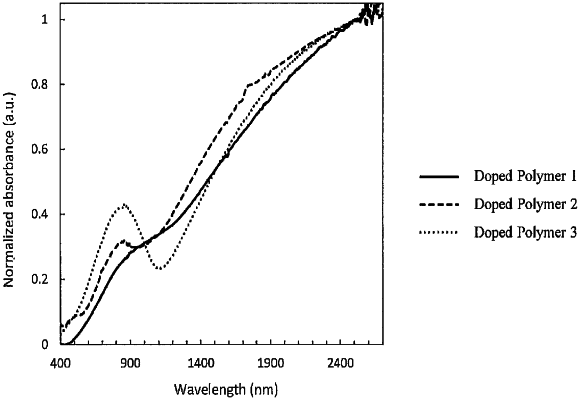| CPC H01B 1/127 (2013.01) | 19 Claims |

|
1. A conductor material having a configuration in which a conjugated polymeric compound having an electron donating group containing a heteroatom in a side chain is doped with a dopant containing an anion selected from a nitrogen anion, a boron anion, a phosphorus anion and an antimony anion, and a counter cation, wherein the conjugated polymeric compound is a polymeric compound having a thienothiophene ring.
|